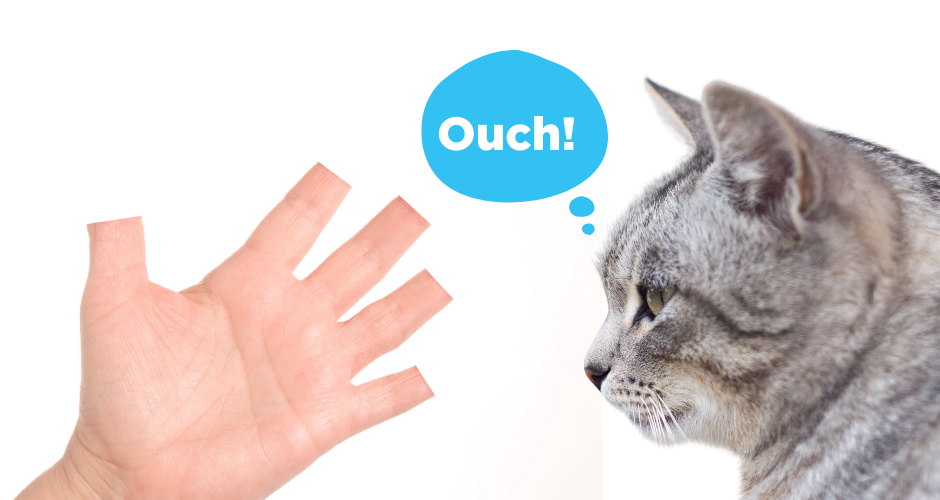Pet CBlog > What to Know about Declawing Your Cat
What to Know About Declawing Your Cat
Are you considering declawing your cat? Did you know that declawing cats can not only be dangerous to its health but also REALLY hurts? Your cat’s claws are used for a lot of task: exercise, play, stretch, climb, hunt and mark their territory. Declawing is neither an effective nor a compassionate way to deal with a cat’s unwanted scratching. Although your cat might use your hands or furniture for these activities, there are many other ways to guide your cat to healthy claw activity! For the sake of your cat's health, please consider some alternatives.
Would you cut off your fingertips?
What is declawing?
The American Association of Feline Practitioners describes feline declawing as an elective and ethically controversial procedure, which is NOT medically necessary for cats in most instances. Declawing entails the amputation of a cat's third phalanx [P3], or third 'toe bone.' THAT SOUNDS PAINFUL!
“Unlike routine surgery recoveries, declawing surgery results in cats bouncing off the walls of the recovery cage because of the excruciating pain...””
Here are a few declawing cat alternatives to consider
1. Nail trimming. If you start early while your cat is still a kitten, they easily become accustomed to having you mess with their feet. Even if your cat is a little older, there are things you can do to make your cat's nail trimming time more pleasurable for both of you.
2. Scratching post. Some cats love them, some don't, but trying a scratching post first is worth a shot before you go immediately to "amputating a finger"! Scratching is natural for cats, so you have to give them some outlet for their natural behavior. There are many brands available at your local pet supply store or online like PurrfectPost.
3. Soft Paws. You can buy Soft Paws directly, but you can likely also buy them at your cat's vet office and have them put on your cat's claws for you. Soft Paws effectively blunt the claws so that when a cat scratches, no damage occurs. Soft Paws are hollow and fit over your cat's own claws for about 6 weeks. Most cats don't even notice the difference.
Statistics about Cat Declawing
Some stats about declawing your cat that may make you reconsider the procedure:
33% of cats suffer at least one behavioral problem after declawing
Litterbox issues are 2x more common in declawed cats
30% of declawed cats suffer from Osteomyelitis (painful bone infection)
Declawing cats is illegal in 37 countries and 8 U.S. cities
Up to 20% of declawed cats develop long-term physical complications
75% to 90% of pet parents regret declawing their cat afterward
Declawing your cat can also be very dangerous if you have an indoor cat that gets outside or an outdoor cat that may get itself into trouble. Your cat's claws are essential tools both for protection against predators and mobility to safely find their way home.
Final Thoughts about declawing a cat
You have a cat because you love cats. Harming your cat for your own convenience is not a way to show your cat that you care. I have a cat that we declawed early in her life. We fall into the statistic of pet parents that regret declawing her. Our cat is 18 now, and she has difficulty traversing our backyard, "defending" herself from our puppy, and we have to use special kitty litter that does not hurt her feet.
Ultimately the decision to declaw or not is up to you as your cat’s person, and declawing is better than having your cat put down. But, please consider every alternative before making such a drastic and harmful choice.
Check out our other Cat Blog articles
Return to the Pet Blog


